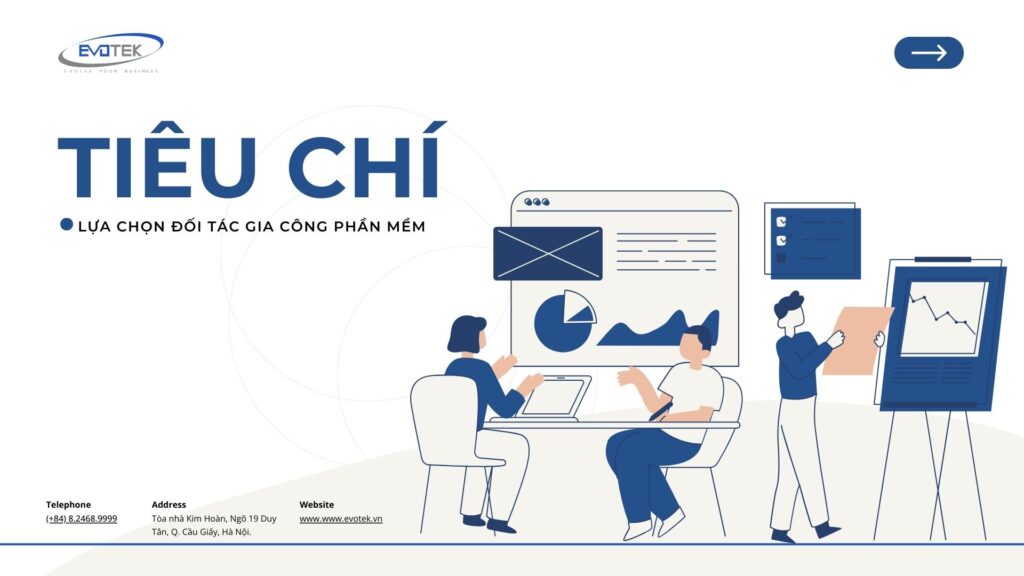After assessing your software development project, the next crucial step is to find a suitable partner for software outsourcing. In the expansive technology market, various IT outsourcing models and options are available. Drawing from extensive experience conversing with clients about their decisions regarding our services, we would like to outline key criteria to assist you in selecting the most suitable outsourcing provider.
1. Professional Credentials
The foremost consideration when selecting a software outsourcing partner is to evaluate their expertise and qualifications. By clearly outlining the required technology stack and skill sets, you can efficiently filter out unsuitable vendors in the initial phase.
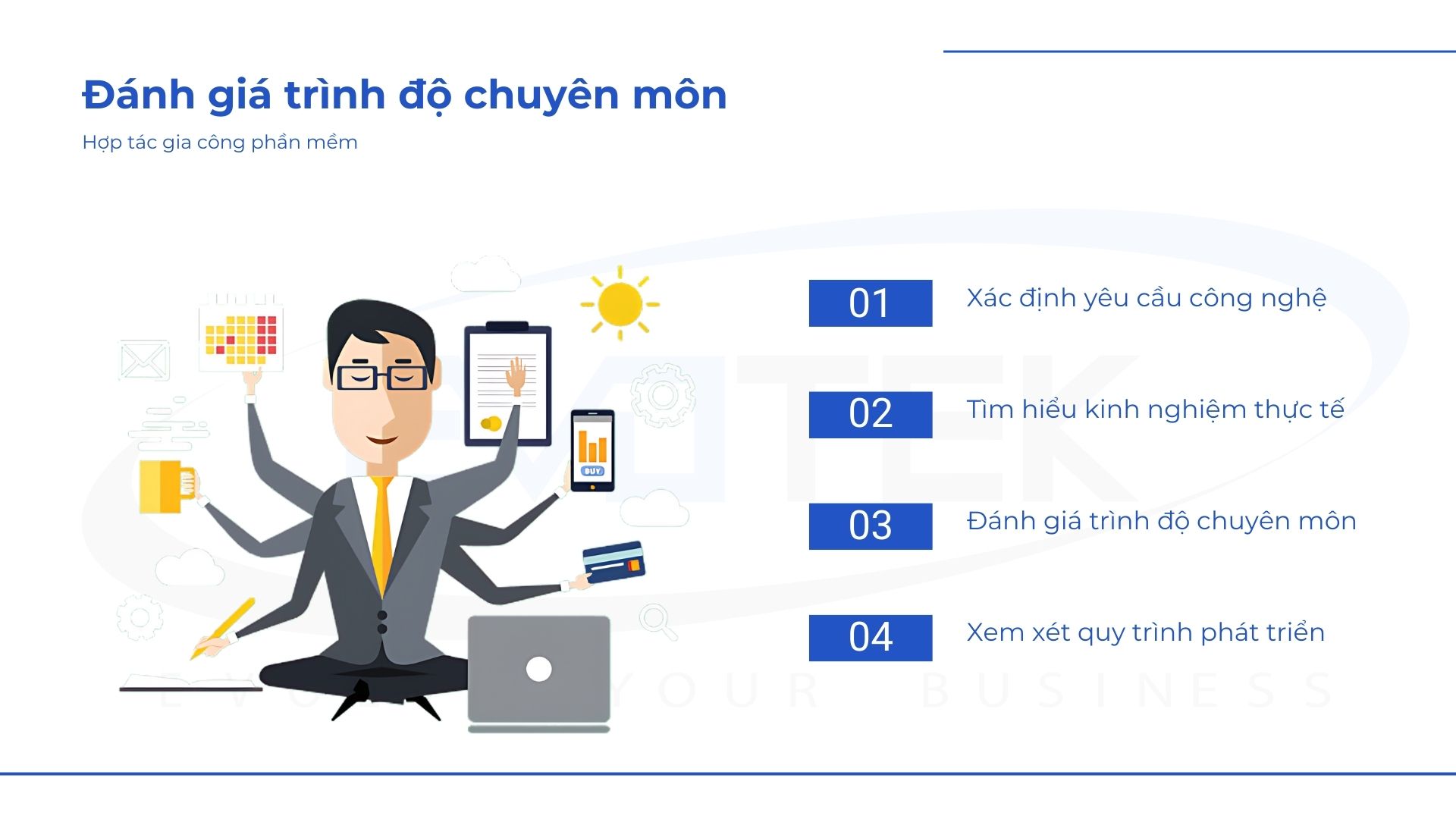
To assess this, follow these steps:
- Clearly define the necessary technologies, programming languages, frameworks, databases, and software architecture for your project. For instance, for a web application project, skills like React, Node.js, MongoDB, and Docker might be required.
- Thoroughly research the practical experience of outsourcing service providers in these technologies and skills. It’s essential not to solely rely on claims of expertise but to request concrete evidence of successfully completed similar projects in the past.
- If feasible, inquire about the qualifications of the specific team members who will handle your project. Instead of only assessing the overall company, evaluate the skills and experience of each member of the project team.
- Assess the software development approach and process of potential outsourcing partners. A proficient software outsourcing partner will employ modern software development methodologies and processes such as Agile, DevOps, Continuous Integration, and Code Review
By diligently following these assessment steps, you will gain a comprehensive understanding of the genuine expertise and qualifications of your outsourcing partners.
2. Industry Experience
Assessing the practical experience of potential outsourcing partners in your project’s field is vital. This ensures that the partner comprehends the specific requirements, challenges, and workflows of your industry, enabling them to offer more tailored and effective solutions.
To gauge the industry experience of potential outsourcing partners, consider the following steps:
- Research their track record in your project area. Examining previous projects they’ve executed for clients in the same field provides insight into their experience and expertise.
- Review their current customer portfolio. Serving multiple clients within your industry signals a depth of experience and knowledge in that particular field.
- Evaluate the expertise of the team members designated to your project. Do they possess prior experience working in your industry? This aspect is crucial as it facilitates a better understanding of project requirements and context.
By meticulously assessing the industry experience of potential outsourcing partners, you enhance your chances of selecting the most suitable partner. Such a partner will grasp your project’s nuances and complexities, enabling them to deliver efficient and responsive solutions.
3. Workforce Scale
Small Software Outsourcing Company (under 100 employees)
| Advantages | Disadvantages |
| Cost-effectiveness | May lack some specific expertise |
| Flexibility in team size and workflow, adaptable to changing project requirements | There aren’t enough resources to scale up quickly if needed |
| Simple communication | Financial vulnerability to market fluctuations or economic situations, particularly without meticulous financial planning |
Medium Software Outsourcing Company (from 200 – 500 employees)
| Advantages | Disadvantages |
| Experience with clients of various sizes | Limited scalability compared to larger firms |
| Diverse talent pool | Limited company branding |
| Established project management and operational processes | |
| Stable financial |
Large Software Outsourcing Company (500+ employees)
| Advantages | Disadvantages |
| Capability to manage large and complex projects | Higher costs |
| Abundance of resources | Limited flexibility in accommodating changes |
| Rapid scalability | The business model is cumbersome |
| Diverse Project portfolio and extensive expertise | Difficult to control quality |
| Valuable Brand | Bureaucratic system |
“The 5% Golden Rule”
The 5% rule stipulates that your project should ideally occupy between 5% and 20% of your outsourcing partner’s total capacity.

Less than 5%: If your project represents less than 5% of your partner’s capacity, there’s a risk it won’t receive the necessary attention and priority. Limited resources may be allocated to your project, resulting in delays or subpar outcomes.
Over 20%: Conversely, if your project exceeds 20% of your partner’s capacity, it may strain their resources. Maintaining a sufficient number of skilled personnel could become challenging, particularly during sudden scaling needs.
Projects falling within the 5-20% range of your outsourcing partner’s capacity are likely to receive appropriate attention and priority. This ensures the development team has adequate resources and focus to fulfill project requirements effectively.
It’s important to recognize that the 5% rule serves as a general guideline. Larger outsourcing firms with ample resources can comfortably allocate 10-15% of their capacity to a project. Conversely, for smaller companies, projects occupying 10-15% of their capacity may pose difficulties.
4. Cost and Collaboration
When selecting the right software service provider for your project, begin by analyzing the average hourly labor outsourcing costs of potential candidates based on their experience and expertise. Compare these costs with regional averages to assess competitiveness.
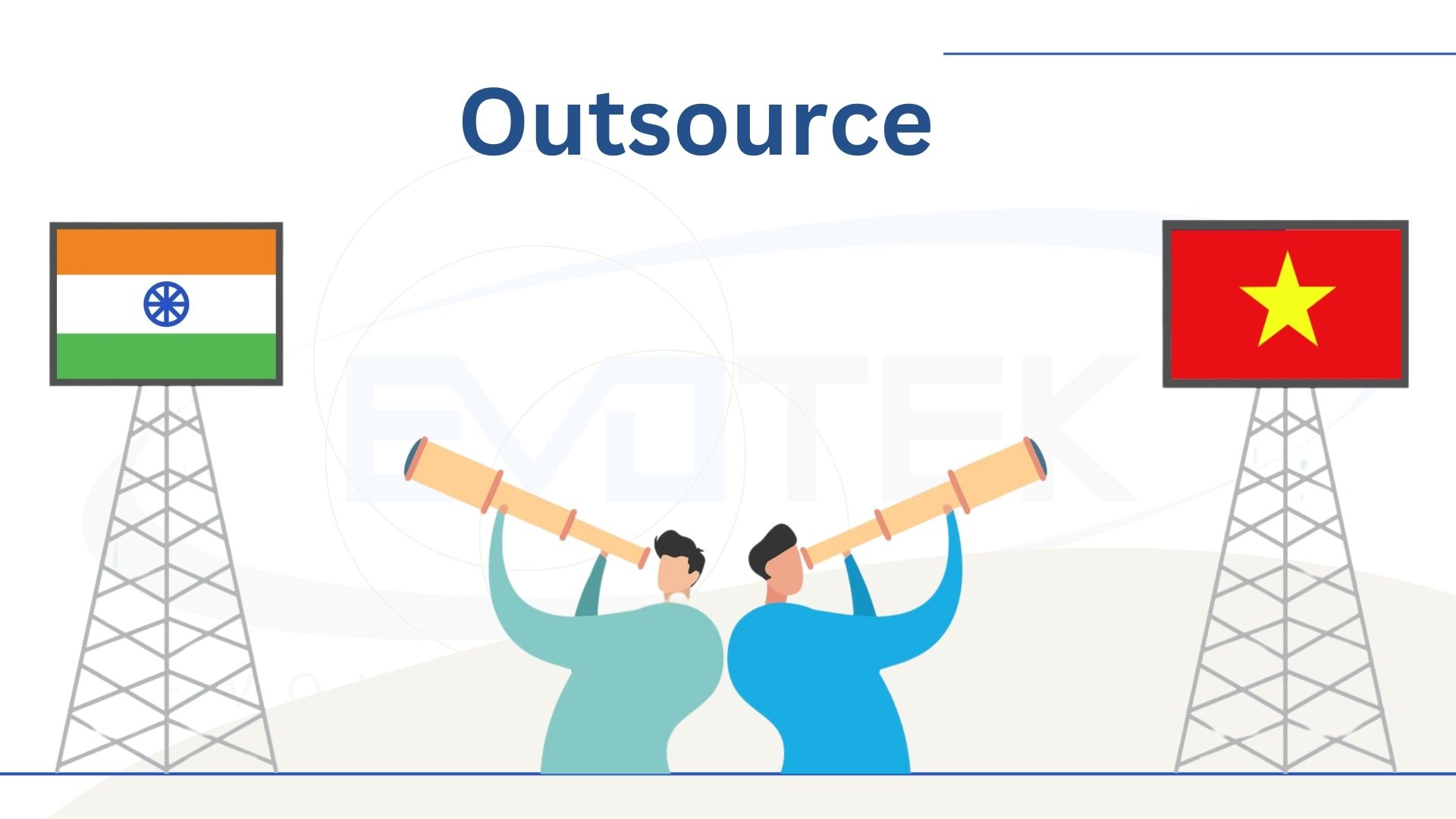
Next, clearly outline the project’s scope, requirements, and goals. Request that suppliers assemble a “virtual team” equipped with the necessary expertise. Inquire about additional costs and specialized services. Don’t forget to ask about promotional costs and special services.
The final project budget hinges on the pricing model chosen, such as fixed price, time & materials, or dedicated team model. Select the most suitable option and proceed with cost calculations.
When obtaining cost estimates, prioritize more than just the numbers. A comprehensive estimate should include detailed information on project functionality, implementation process, key milestones, and expert advice tailored to your situation.
Additionally, ensure the estimate addresses factors like approach, technology, deliverables, risk management, assumptions, and limitations. Absence of such information warrants caution. This information will help you have a comprehensive view, thereby making the most informed decision. If information is missing, that’s reason to be wary of that estimate.
Ultimately, do not solely base your decision on cost when choosing an outsourcing partner. Consider all pertinent aspects to select a partner that aligns with your project needs and provides long-term value to your business.
5. Communication
Proficiency in English
Strong English proficiency is a fundamental requirement for any software development company, given its importance as a communication language in the tech industry. While an intermediate level may suffice for mid- and low-level professionals, senior team members must possess fluent English skills to promptly address customer requests, complaints, and suggestions. Therefore, they must be really fluent in English.
Communication Frequency and Transparency
Regular and transparent communication throughout the software development process is vital. Establishing this from the outset and maintaining it throughout the collaboration is essential. Expectations include holding weekly online conference calls, regular email exchanges, and daily instant messaging. Regular status reports ensure the engineering team remains focused on high-priority tasks.
Managing Agile Development Processes
If the team employs an Agile/Scrum approach, inquire about key practices such as cumulative demos and reviews after each sprint. What format do they prepare for demo sessions? What important questions are typically discussed in a review meeting? What metrics do they use to evaluate Sprint success? The answer will help you better understand your partner’s flexibility and development process management skills.
6. Location and Time Zone Considerations
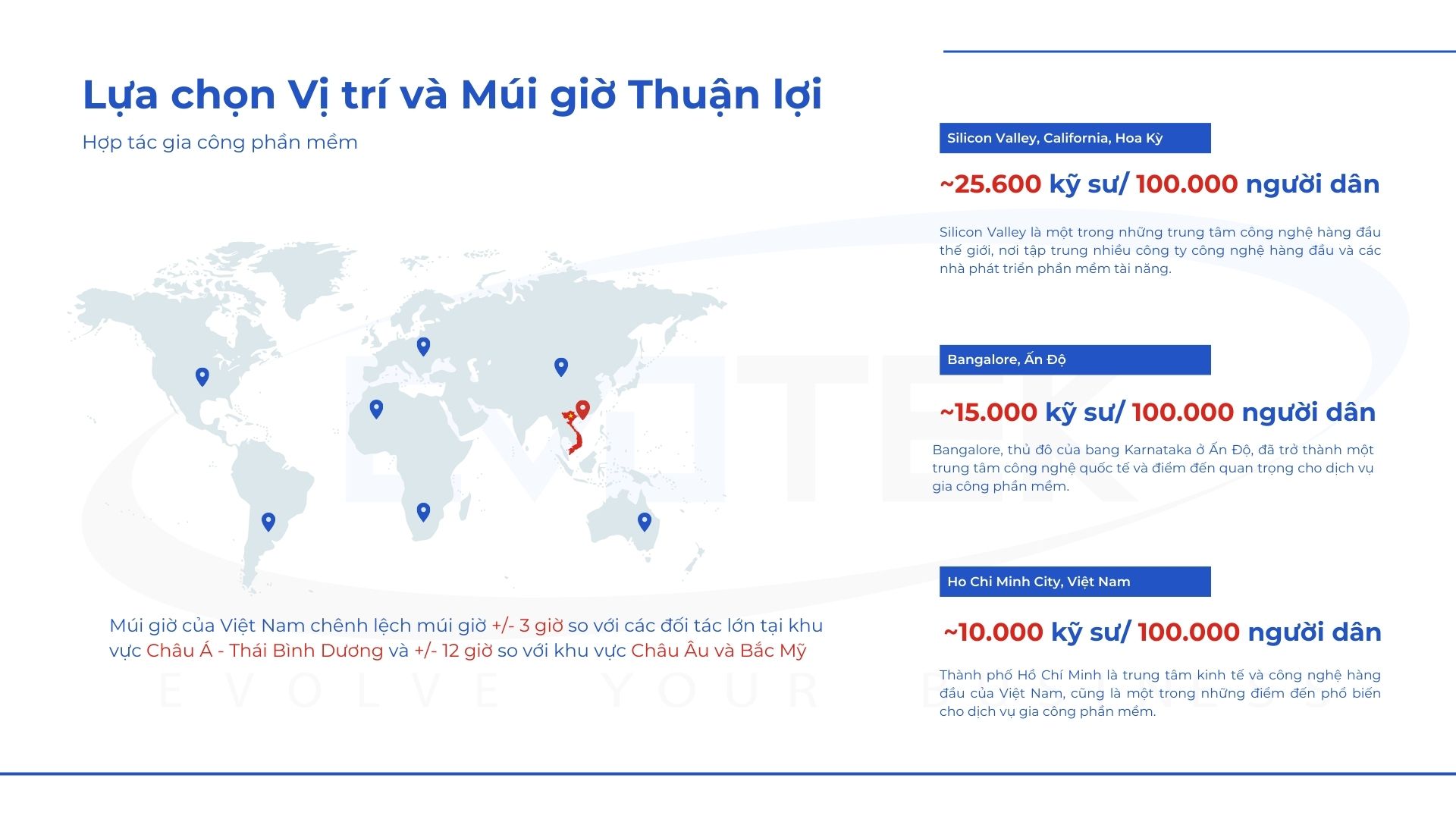
Selecting a Convenient Location and Time Zone
When choosing a software service provider, geographical location plays a pivotal role. Opting for a provider with a convenient location entails shorter travel distances, minimal time zone disparities, and visa-free arrangements, which can significantly reduce associated management and administrative costs.
Numerous renowned software outsourcing destinations exist worldwide, including South/Latin America, Southeast Asia, and India. Among these, Vietnam emerges as a noteworthy destination in Southeast Asia, boasting a young, dynamic workforce and competitive costs.
Geographically, Vietnam enjoys a favorable position in the heart of Southeast Asia, situated along crucial maritime and air routes connecting major markets such as China, Japan, Korea, India, and Southeast Asia. This strategic location enhances Vietnam’s international trade and collaboration prospects, particularly in software outsourcing.
Vietnam’s time zone presents a significant advantage as well. With a time difference of approximately +/- 3 hours relative to key partners in the Asia-Pacific region and +/- 12 hours relative to Europe and North America, Vietnamese IT service providers can adeptly cater to global customers.
The Significance of In-Person Visits
Amid current travel restrictions, seizing the opportunity to visit the vendor’s center before finalizing agreements holds paramount importance. Even a brief visit can yield invaluable insights surpassing numerous online meetings.
Opting for a geographically favorable location and appropriate time zone facilitates more efficient communication and project management. Moreover, conducting in-person visits allows for a more accurate assessment of your partner’s capabilities and organizational culture prior to commitment. These factors substantially contribute to the long-term success of software partnerships.
7. Intellectual Property and Data Security
Safeguarding intellectual property, business concepts, and ownership rights is paramount when engaging with a software service provider. Throughout the evaluation and selection process, it’s crucial to thoroughly understand the legal protocols and formal agreements in place to ensure comprehensive protection of the company’s intellectual property and interests.

Key Considerations and Negotiations with Suppliers:
Non-Disclosure Agreement (NDA): Prior to sharing any confidential information or commencing a project, an NDA serves as a fundamental safeguard against the disclosure of your business ideas to third parties.
Intellectual Property Rights: The agreement should unequivocally establish your company’s exclusive ownership of the source code, products, and related assets such as designs and documents.
Non-Compete Agreement (NEA): To mutually safeguard interests, the supplier agrees not to poach employees from your company and vice versa.
Data Security: This clause mandates the implementation of stringent security measures by the supplier to protect your data throughout the project lifecycle.
Additionally, certifications like ISO 27001 and CMMI attest to the supplier’s security competence, demonstrating their ability to manage risks, apply data security practices, and adhere to standard software development processes.
The vendor evaluation process entails both quantitative and qualitative analyses across various criteria aligned with your business and product objectives. Following initial data gathering, employ a detailed evaluation criteria checklist to compare and select the most suitable partner.
Protecting intellectual property and data demands meticulous attention from the outset when collaborating with software partners. Only through agreed-upon confidentiality provisions, rigorously enforced, can you confidently shift focus towards product development and commercialization.
Conclusion
Entering into a software development partnership necessitates thorough research on potential partners. From assessing service portfolios and technical capabilities to delving into reference projects and customer feedback, this process is time-intensive yet crucial. It serves to mitigate risks, prevent misunderstandings, and avert potential errors in project management.
Whether you’re a startup founder seeking an inaugural development team or a seasoned business owner seeking additional IT resources, utilizing a vendor evaluation criteria checklist is invaluable. The granularity of detail facilitates more informed business decisions than ever before.
At Evotek, we’ve crafted a comprehensive assessment encompassing a detailed set of questions for each criterion. This framework aids in proactively gathering information, scoring, and ranking each criterion, simplifying the selection of the partner best suited to your project needs.
We recognize that selecting the right software provider is a pivotal strategic decision. Therefore, we encourage thorough research and a scientific approach to addressing the challenge.
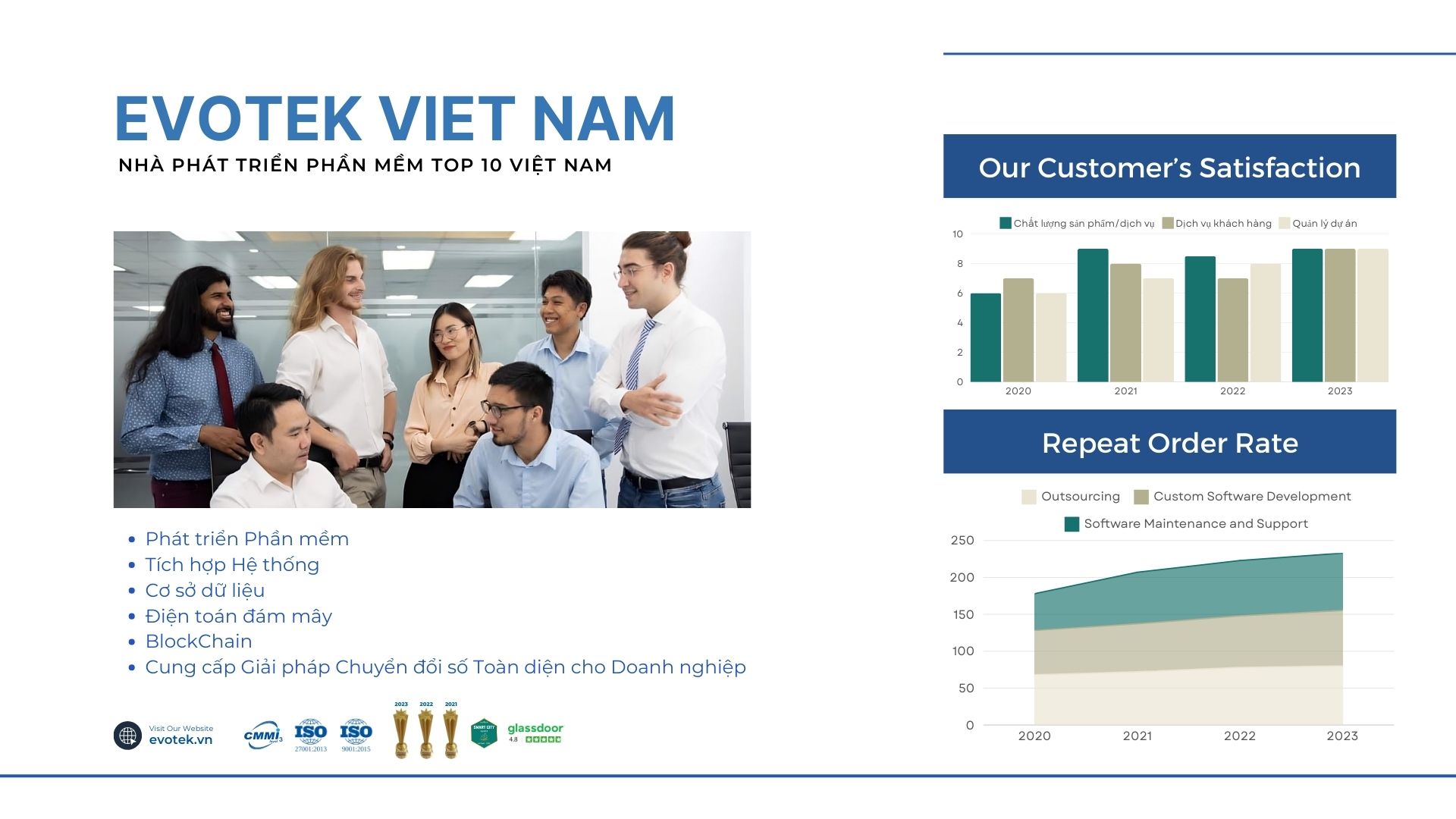

 日本語
日本語 한국어
한국어 Tiếng Việt
Tiếng Việt 简体中文
简体中文